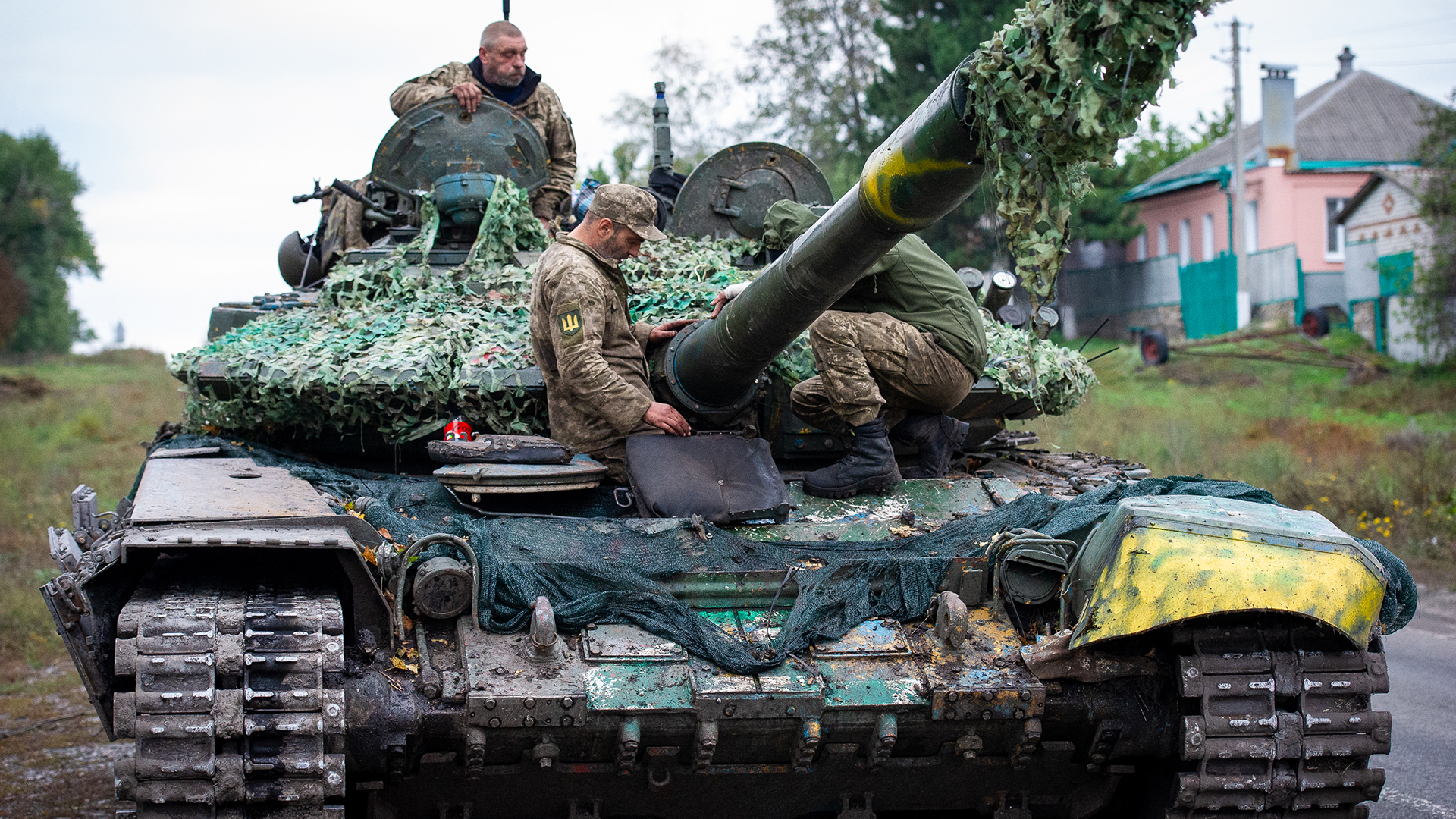

The Defense Department’s latest military assistance to Ukraine includes funding for 45 tanks, but not Western main battle tanks such as the M1 Abrams.
The U.S. military is paying for 45 Soviet-era T-72 tanks currently owned by the Czech Republic to be refurbished and sent to Ukraine, Pentagon Deputy Press Secretary Sabrina Singh told reporters on Friday. The Netherlands is paying for another 45 refurbished T-72s for the Ukrainians, so a total of 90 tanks will begin arriving in Ukraine next month.
This is the first time that the United States has included tanks in its military assistance to Ukraine, Singh said at a Pentagon news briefing.
Subscribe to Task & Purpose Today. Get the latest military news, entertainment, and gear in your inbox daily.
Both Poland and the Czech Republic have already sent the Ukrainians T-72 tanks, but neither the United States nor any of its allies have provided Ukraine with more modern battle tanks made by Western countries.
“In terms of why aren’t we providing new tanks, or American tanks: Introducing a new main battle tank is extremely costly; it’s time-sensitive; and it would be a huge undertaking for the Ukrainian forces,” Singh said. “So, we do continue to consult with our allies and partners to assess our ability on what we can provide in terms of Western armor platforms, but these tanks, we believe, will make a difference on the battlefield.”

Ukrainian government officials have repeatedly asked Germany for Leopard II tanks and other fighting vehicles, but German Chancellor Olaf Scholz has refused to give the Ukrainians any tanks.
Frustrated by Germany’s stance, Ukrainian President Volodymyr Zelensky told the German Bild newspaper last month: “For us, tanks mean that we can rescue more human lives. Armored engineering is a question of survival, the survival of our soldiers.”
A senior defense official told reporters in September that the Defense Department was open to giving the Ukrainians more advanced tanks “provided that the training, maintenance, and sustainment can be taken care of.”
On Friday, Singh said the U.S. was providing Ukraine with more Soviet-era tanks because their forces already know how to use them. Prior to Russia’s invasion in February, Ukraine’s military had both T-72s and T-84 tanks — which are based on the Soviet T-80 design — although most of their tank fleet was comprised of older Soviet-era T-64s. In addition to the tanks provided by Poland and the Czech Republic, the Ukrainians have also captured and repaired damaged Russian T-72 and T-80 tanks.

Singh did not have any information on Friday about which variant of T-72s the Ukrainians will receive, but she said the tanks will have “advanced optics, communications, and armor packages.”
Reuters reported that the tanks will be the equivalent of T-72 Avengers once they are fully refurbished.
Manufactured by the Czechs, T-72 Avengers include several improvements on the original tank design including a night-vision system that can work in passive mode for up to four kilometers, said Steve Zaloga, an expert on Soviet and Russian tanks. In “passive mode,” a tank gunner can aim at a target without using an infrared laser that adversaries can detect.
T-72 Avengers also have turrets that are equipped with Explosive Reactive Armor, which are designed to repulse anti-tank rounds and missiles, as well as a radio and intercom system able to withstand electronic warfare attacks and a navigation system that can transmit Global Positioning System coordinates, Zaloga said.
However, like other Soviet and Russian-made tanks, T-72s have a fatal flaw: They are built with autoloaders store up to 20 rounds at the base of the turret, and even the slightest hit to the tanks can ignite the ammunition, causing the turret to blow off in apocalyptic decapitation known as the “jack -in-the-box effect.”

The U.S. military’s M1 Abrams main battle tanks are designed to avoid exactly that type of scenario by storing ammunition behind blast doors. If the rounds explode, blow-out panels vent the hot gasses away from the crew, giving soldiers time to escape.
In April, Poland’s defense minister signed a deal for M1A2 System Enhancement Program version 3 (SEPv3) Abrams tanks to replace his country’s older Soviet-era tanks, including T-72s.
U.S. Rep. Mike Waltz (R-Fla.) said on Friday that the T-72 tanks Ukraine is receiving will make a difference on the battlefield, but the Ukranians should eventually get M1 Abrams tanks as well.
“These systems will make an immediate difference, especially in southern Ukraine where the terrain is more open around Kherson,” Waltz, an Army colonel and Special Forces officer, told Task & Purpose. “These tanks require no new training plus use the same parts and logistics as the current tanks in their military, and with the Russian tanks they have captured. In the medium to long run, the U.S. should sell American-made M1 tanks.”
Ukraine’s Foreign Minister Dmytro Kuleba tweeted his thanks to the United States, Netherlands, and Czech Republic on Friday for the 90 T-72s his country will receive. Kuleba did not mention Ukraine’s requests for Western tanks.
“First 26 repaired and modernized tanks will arrive within the next month,” Kuleba tweeted on Friday. “Thank you, friends, for your unwavering solidarity with Ukraine.”
The latest on Task & Purpose
- The Navy’s most advanced aircraft carrier is officially flying a brand new battle flag at sea
- Video shows alleged Ukrainian drone swarm attack on Russian warships in Crimea
- We salute the USS Daniel Inouye for flying its badass battle flag on the way into port
- This Army video shows how much Ranger School has changed in 70 years
- We salute this F-15 fighter jet for rocking the most ‘Murica paint job ever
Want to write for Task & Purpose? Click here. Or check out the latest stories on our homepage.